Fixed time races, faux coyotes and French toast
I wanted a bold challenge to end 2021, and there was no question which fixed time race excited and scared me the most: Across the Years (ATY) 10-day event.
I registered to run for 10 days round a 1-mile loop within the baseball training facility of the Chicago White Sox and Los Angeles Dodgers, at Camelback Ranch, Phoenix, Arizona.
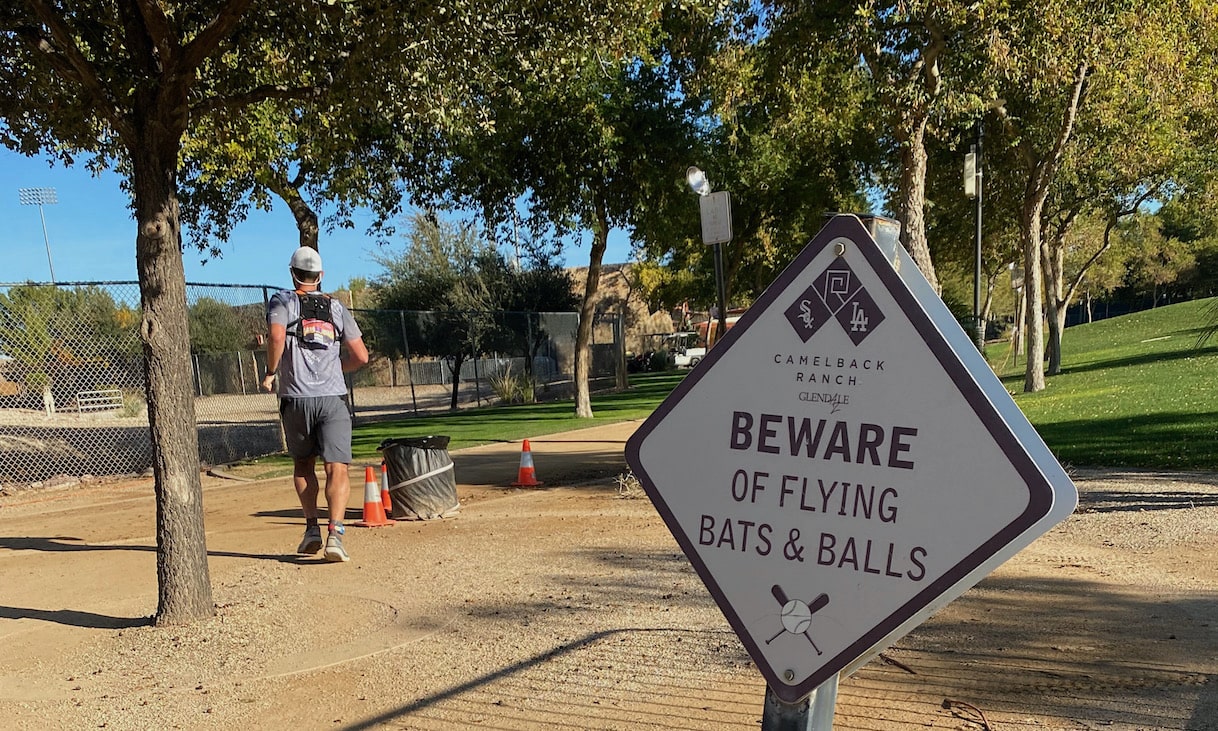
Aravaipa Running
This fixed time multi-day running festival by Aravaipa Running has the traditional 6-day race with 24 hour, 48 hour and 72 hour races over the New Year, along with many different multiple fixed distances, lifetime miles, and a Last Person Standing event.
For the fixed time events, you select your race and cover as much distance as possible during the time. You can walk, eat, sleep and stop whenever you want.
The clock starts and finishes when the time of your chosen event ends. As there are no cut offs, there are no DNF’s provided you complete at least one lap during your event.
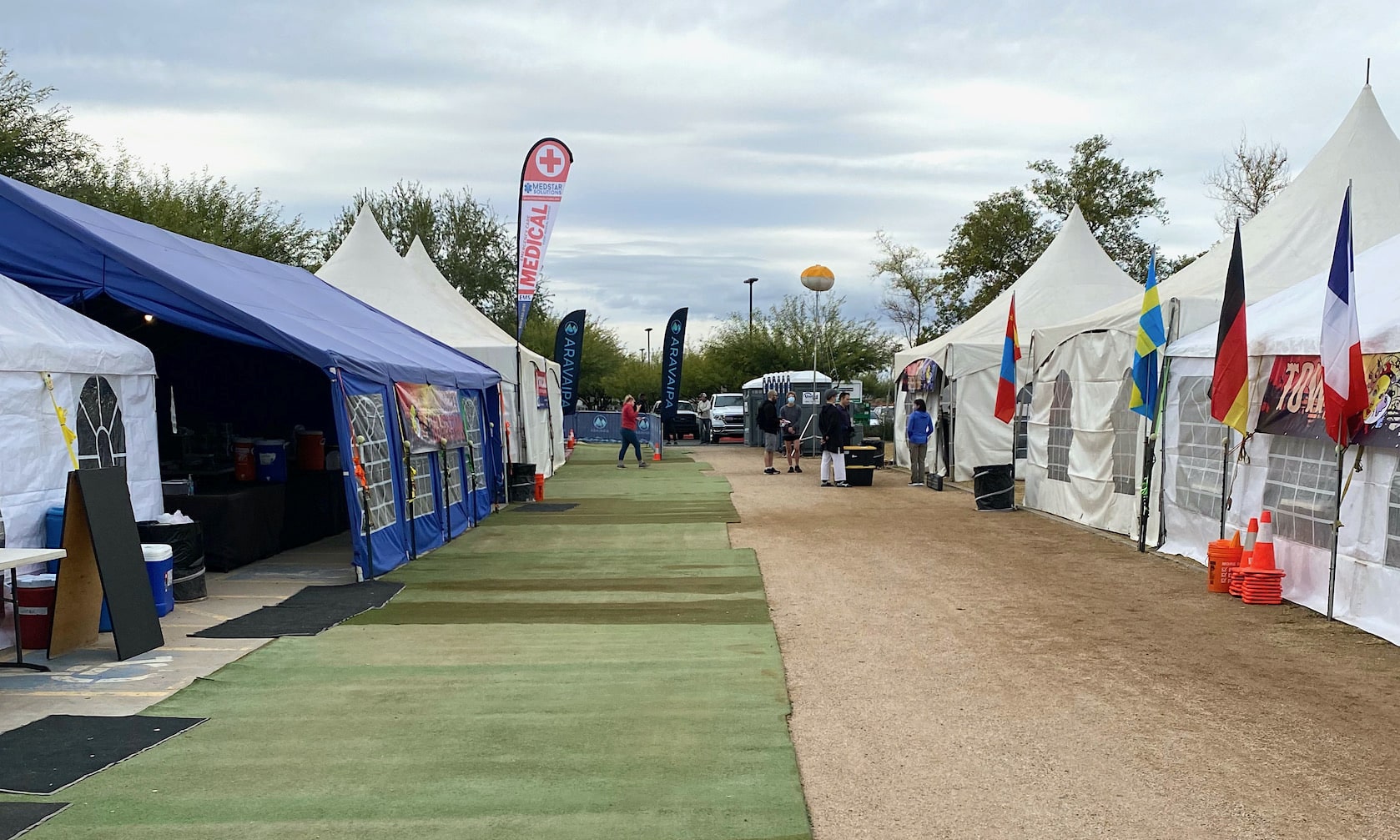
Main Street before the race with Town Hall, Food Tent, Warming Tent, Nap Tent and First Aid Tent.
This flat course is certified by the USATF (USA Track & Field) giving runners the opportunity to break records and provided all guidelines are met. Information on the requirements can be found on the Aravaipa Across the Years website.
Loop facts
The loop is made up of gravel walking paths, smooth dirt and asphalt surfaces with natural waves that follow the terrain; and at night is lit by permanent and temporary lights.
- Distance: 1.047767 miles | 1.686218 kms
- Surface: Packed gravel road; asphalt; concrete; and packed gravel trail
- Course width: 2.5 – 6m
- Elevation gain: 2.5m approximately
Ultramarathon lessons
Fixed time racing continued my ultra running journey and education. I learned an immense amount about performance, keeping your race strategy simple, mental toughness, kit and sleep. And on reflection, the lessons ATY reinforced apply to all ultra-races.
1. Kit and weather conditions
Since I was flying to this event, I knew I had to pack smart. I carefully thought through every piece of kit and the clothing options I would need for 10 days of cold nights and warm days. My waterproof pants were invaluable at night, and I was so glad I packed a warm beanie, gloves and mittens.
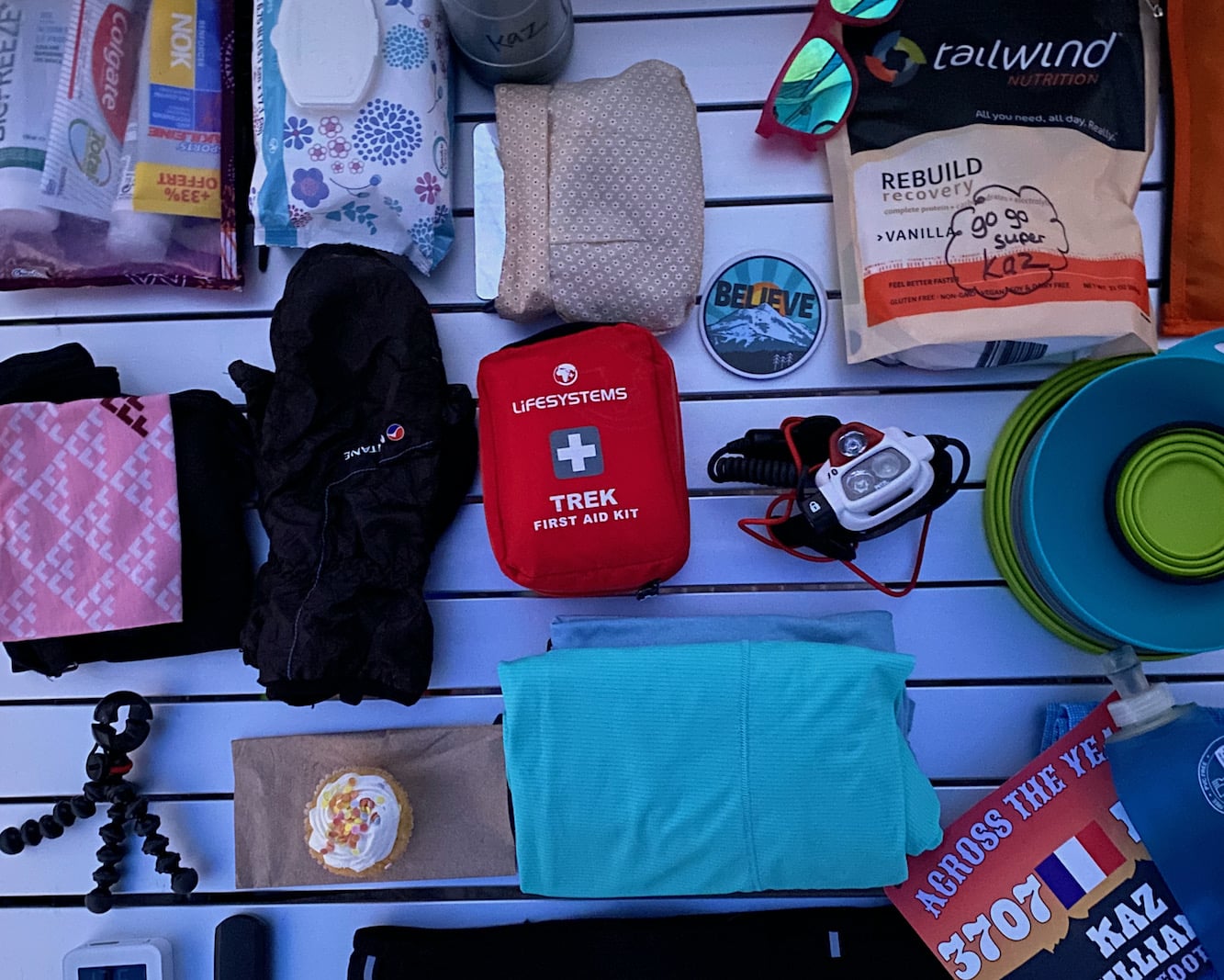
You quickly learn what to wear during ATY. During the days you could run in shorts and a tee, or a long sleeve top and 3/4 leggings; and then at dusk, when temperatures drop, you would change into your night-time running kit.
The first night caught me out, as I innocently enjoyed a beautiful sunset. By the time I got to my tent it was dark and I was shivering. For the rest of the event, it was all about race management. I would lay out my night-time running kit during the day, ready for the evening transition.
Responding practically and quickly to weather conditions and temperature changes applies to all races. Not leaving it too late to put warm clothes on, and similarly, not leaving it too long before taking layers off, conserves energy.
We run more efficiently when wearing the right kit for the conditions.
2. Train with specificity
To improve at a particular type of ultra-distance or terrain we must train with specificity.
After a summer of big mountain running, I switched from focusing on elevation gain to sessions on lower, undulating trails and more flatter road routes. From a grit perspective, I knew my mountain training and mental and physical endurance would transfer to the multi-day nature of ATY.
My workouts needed to stress me in a way that reflected the demands this flat 1-mile loop would create. If I wanted to get better at running on the flat, I knew I had to spend time training on more regular routes, particularly the closer I got to the event.
I found a neat 3 km loop around the Heli base in Chamonix which became my long run training ground. However, from a specificity perspective, I prioritized flatter routes over running in loops.
Deciding to only train on this loop once a week made sense to me. I was going to be spending a long-time running round in circles and thought, best not find out it’s not-my-thing before the race. Can you imagine?!
When looking at your race schedule take time to understand the specificity of each event, and then plan your training to stress your body in a similar way to the race conditions.
3. Embrace challenges
Ultramarathons, of every distance and terrain, provide a perfect opportunity to become fully immersed in an experience and test our coping strategies.
It is during the toughest part of a race, when I am running deep into the pain cave, that I acknowledge this is what I signed up for. At ATY this feeling of full involvement found me on Day 3 and from then, until the end of the race, I embraced the experience.
The only way for us to get better at navigating difficult times when racing is through hard work and continuously challenging ourselves. And it takes time and practice.
How we handle obstacles is everything. We decide how we respond to a situation. Do we let it overwhelm us, or do we choose to take the lesson and in the process, strengthen our resilience?
The only way to practice this is by taking on events that excite and scare us. When confronted with a tough moment in a race (and life) we can use it as an opportunity to acknowledge the situation, embrace the challenge and face it head on by taking control.
What challenge excites and scares you?
Curious about running ATY?
Below is a description of the race route and event features in the clockwise direction.
Start finish line
The start finish line is also the turnaround point. Every 6 hours you change direction. There is music and dancing and great energy by the Aravaipa crew and Timekeepers. Runners get involved and disco their way around the turnaround cone.
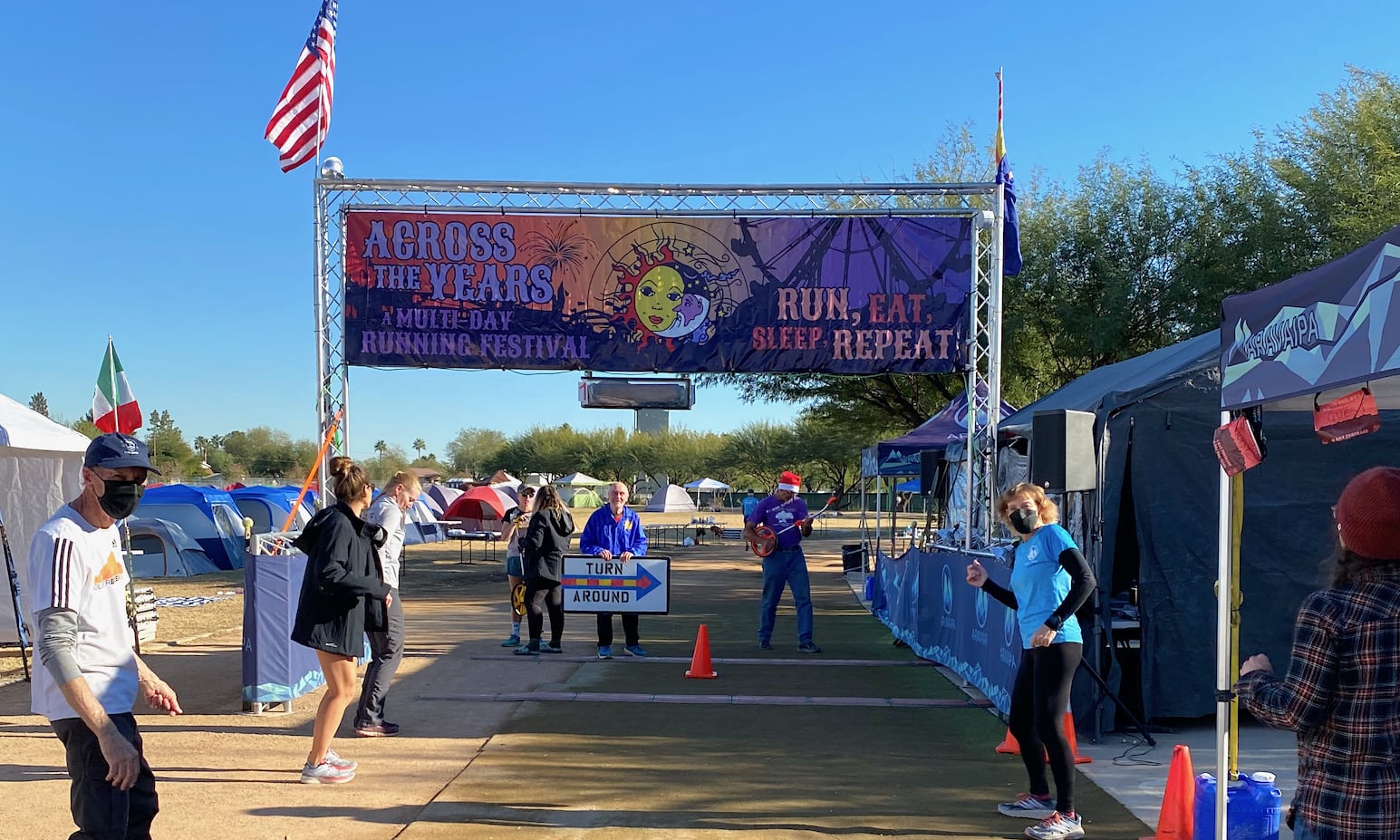
If you take a break or sleep over a change in direction, you re-enter the race in the same place, and continue in the direction you were going when you stopped. You finish that loop, and then you change direction. So, for part of a loop you will be running in the opposite direction to everyone else.
Tent City
After you cross the start there is a large field on your left where you can camp. Tents are available to hire, along with cots, or you can pitch your own tent. Tent City was my home for the 10 days.
I hired a tent and cot and brought my own sleeping bag. Knowing it was going to hover around freezing at night, I needed a warmer sleep system. The conversation I had with myself in Walmart when buying a duvet went something like this:
Me: Buy the sensible color.
6-year-old me: Frozen! Frozen!
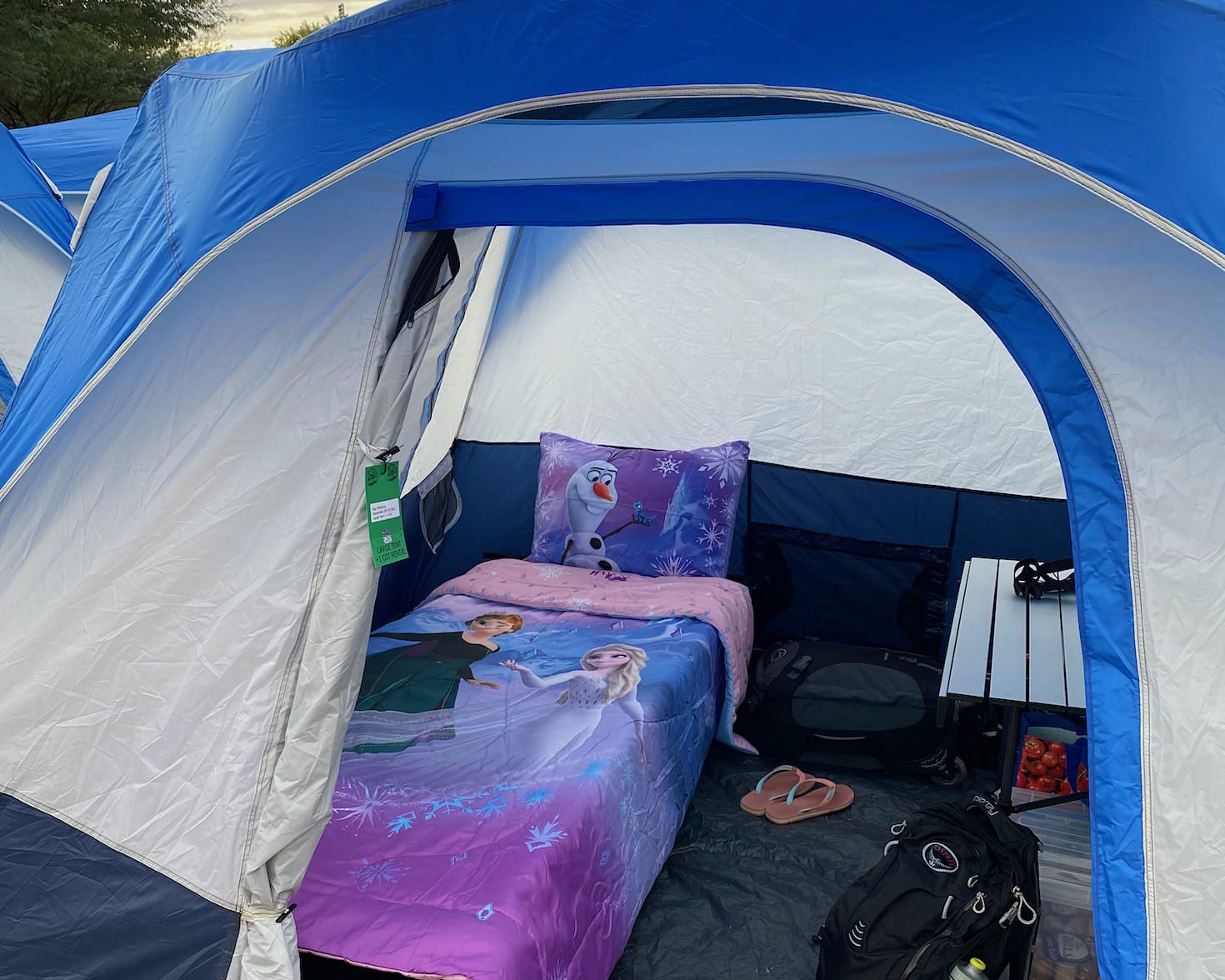
How can this duvet not make you smile!
Even with this cosy comforter and wearing all my warm layers, I still shivered at night. Ice would form on the inside of the tent and my wet wipes turned into a frozen block of freshness.
On hearing just how cold I was, Van, an experienced ATY racer, lent me her pink, puffer onesie. It was so cosy I even considered running in it.
Silver Washer Boulevard
At the end of Tent City, you turn onto an asphalt section I called Silver Washer Boulevard because it had over 20 small washers amongst the grit.
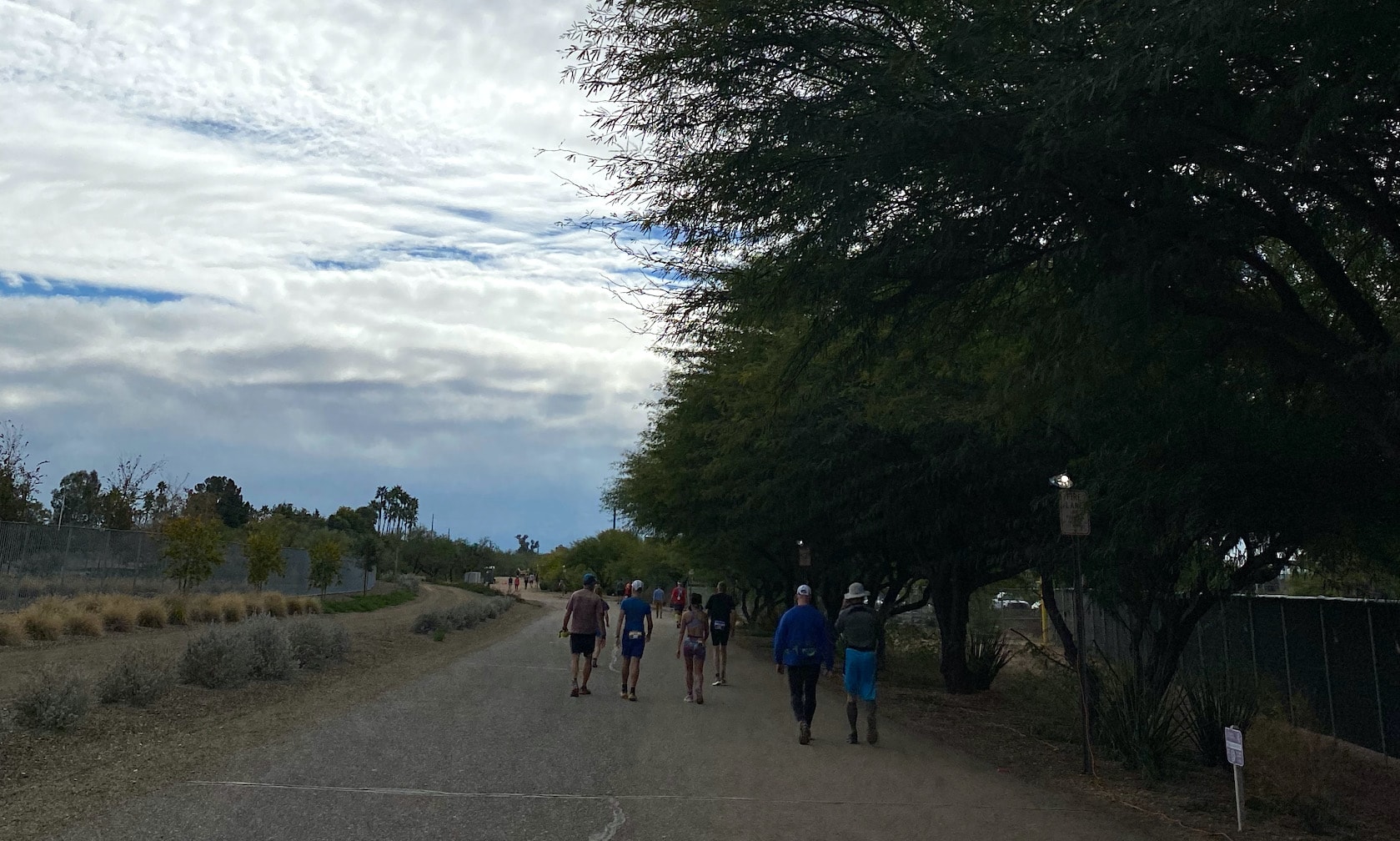
This straight stretch connects with a dirt track and is the widest part of the 1-mile loop. As you can see from the photograph there is some canopy cover which is welcomed during the warmth of the day.
Million Dollar Highway
A few years ago, I drove the Million Dollar Highway in Colorado, which follows US Route 550 from Ouray to Silverton.
According to Wikipedia:
The origin of the name Million Dollar Highway is disputed. There are several legends, though, including that it cost a million dollars a mile to build in the 1920s, and that its fill dirt contains a million dollars in gold ore.
My Arizona Million Dollar Highway was named because it was the RV Park for the race. Imagine Optimus Prime and his team, stationed 90 degrees to the track. It was very impressive.
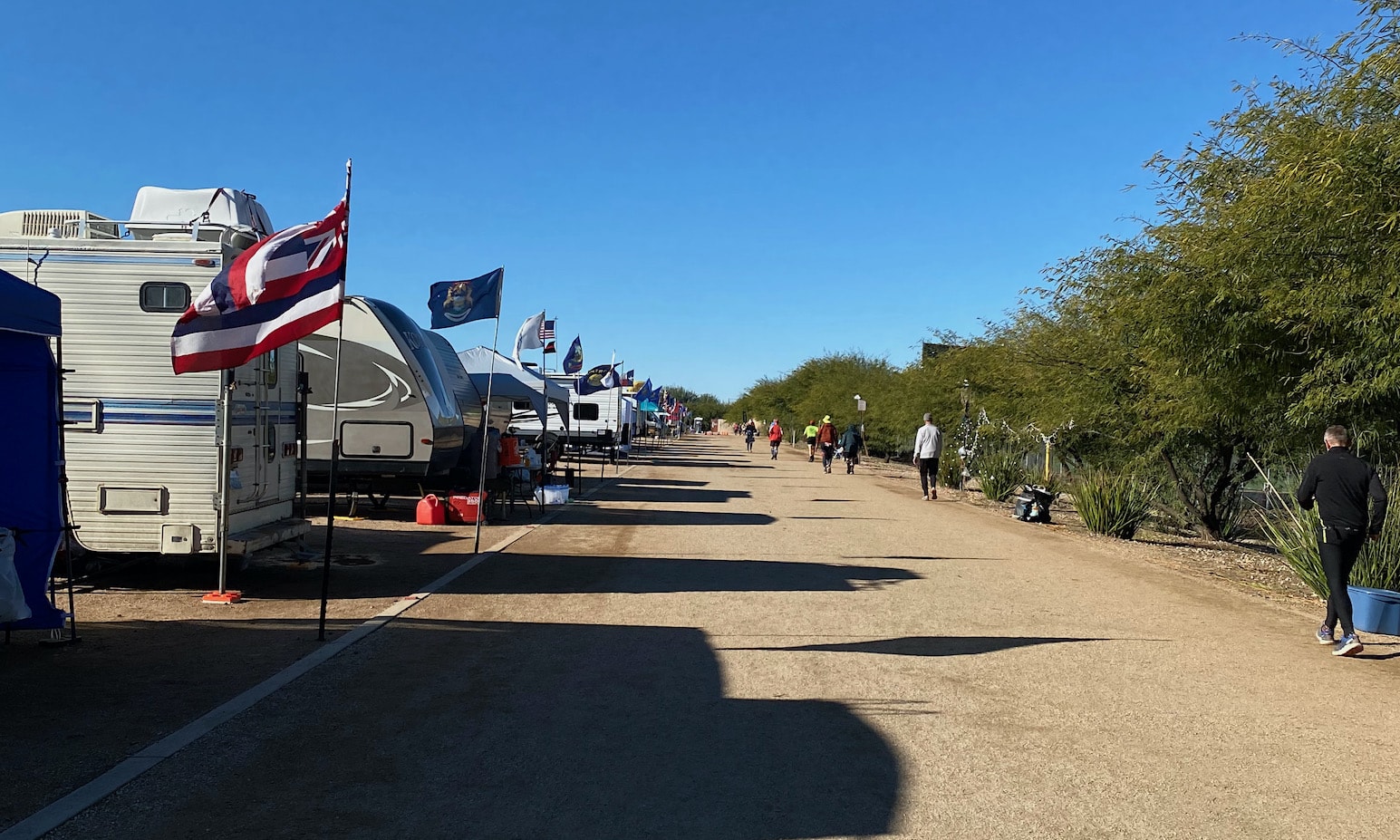
There were flags, signs of encouragement, fairy lights at night, amazing crews, gazebos and more. The support along this section was incredible.
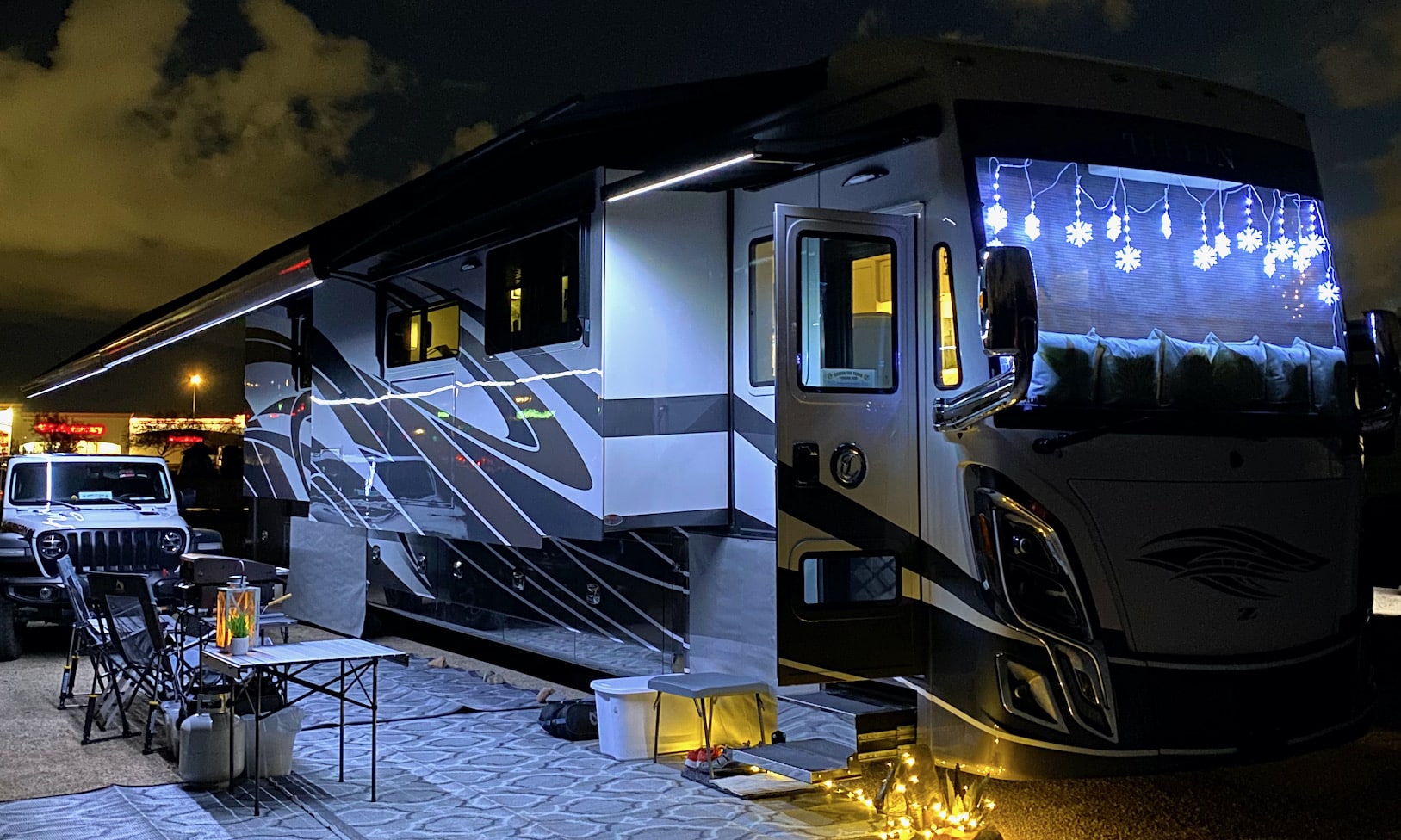
The Enchanted Forest
Towards the end of the RVs, at the half mile, there is also a race timing mat and satellite aid station. At this point you turn right into The Enchanted Forest, the gardens of the Sox and Dodgers training facility which features lush greenery and where the course is at the minimum width.
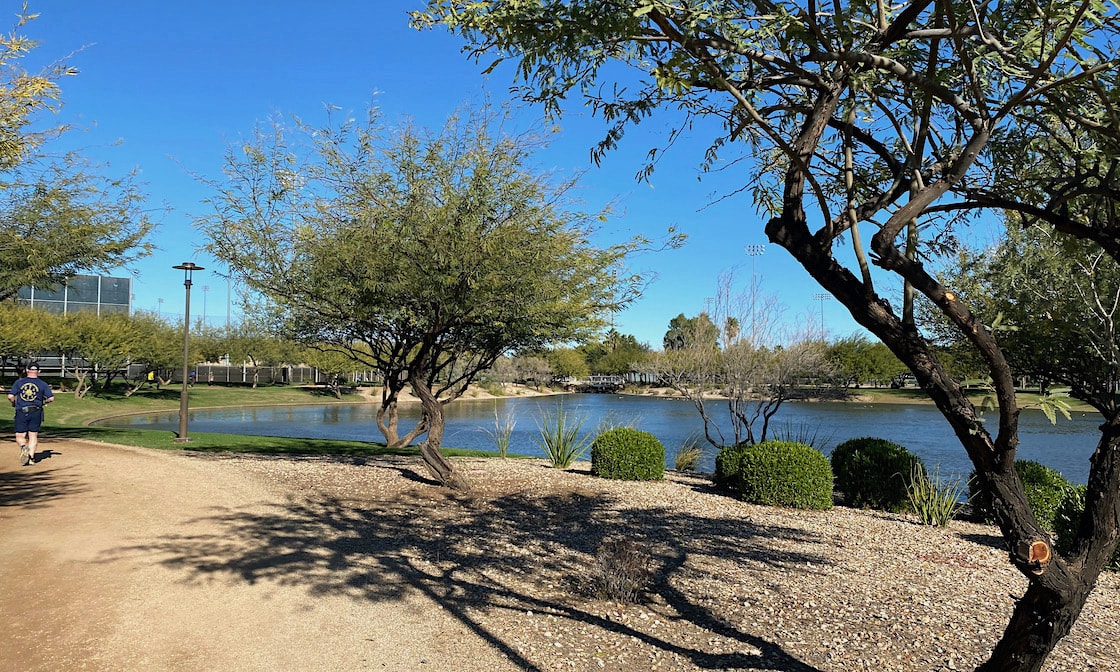
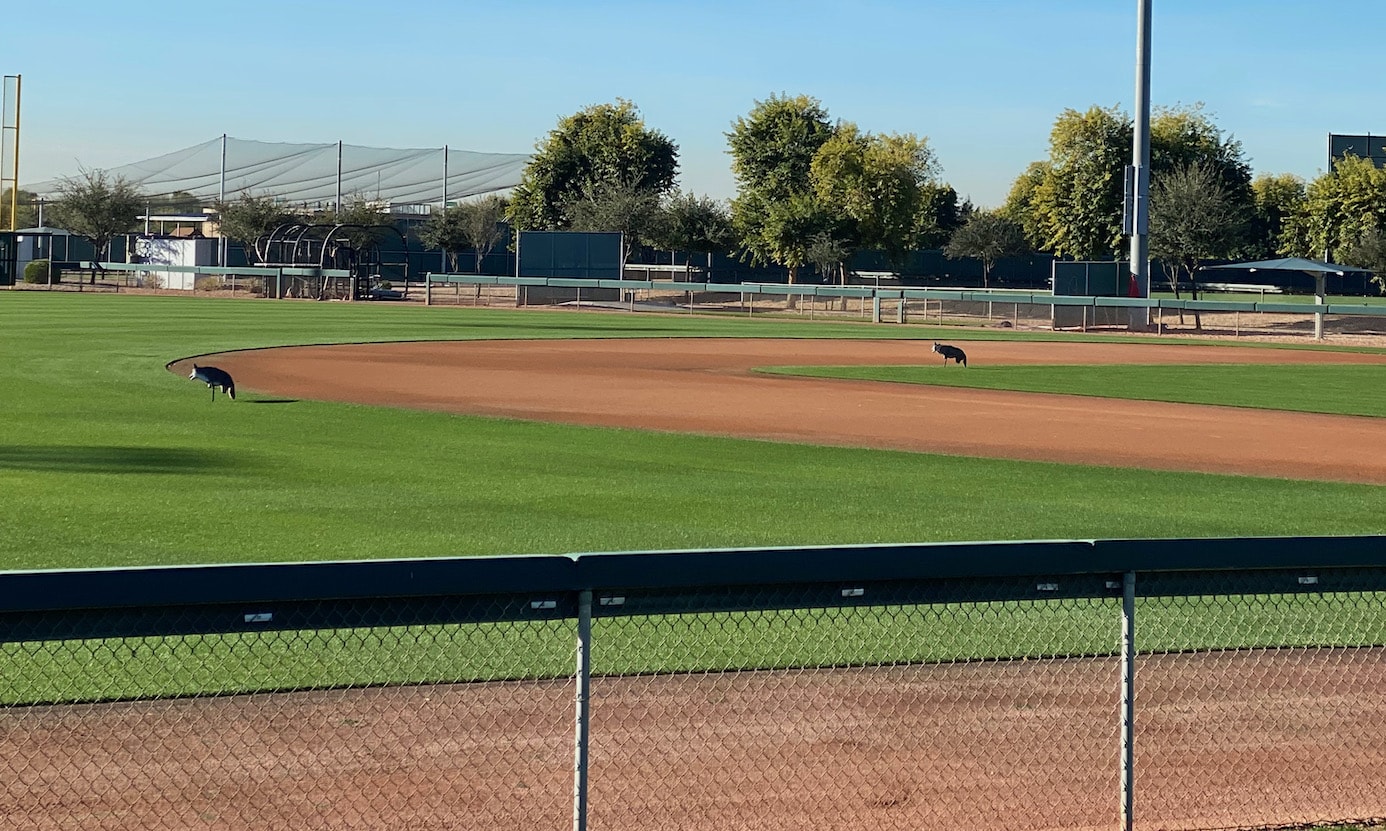
With beautifully managed lawns, trees, a lake and faux coyotes, this was my favorite section of the course to be on at sunrise and sunset. I love trees and these trees captivated me.
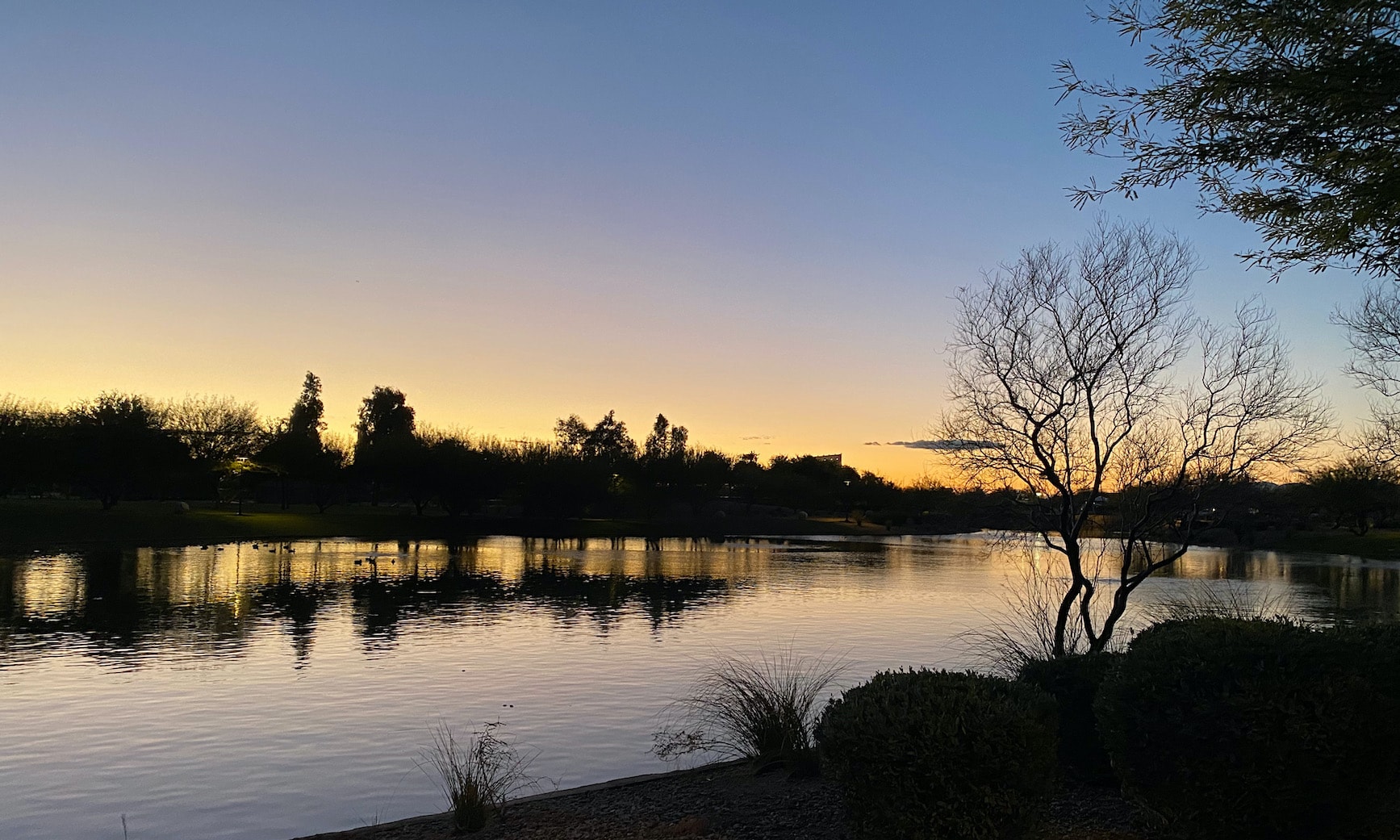
And then before you know it, you’re on the home straight heading back to Main Street and the start finish line, where there is a live monitor showing race results including a breakdown of your number of loops, distance and position.
The Food Tent
Head of Catering, Pati, and her amazing team provide fantastic food 24hrs a days with vegetarian and vegan options. Pancakes, oatmeal, French toast, breakfast burritos, lunch options, afternoon smoothies, recovery drinks, snacks and delicious evening meals. This fully stocked aid station is a trail runners feast.
Being plant based, there was a vegan alternative to every meal, even French toast and it was de-licious. You honestly don’t need to bring your own food to this race, unless there is something specific you like.
When the going gets tough
Don’t get me wrong it wasn’t all cool runnings. I had many tough times out there.
My original goal of 500 miles blew away in the breeze when I strained my calf on Day 3. At first, I thought I could just walk it off. Georg, a fellow runner, kindly left her foam roller by her RV for me to use which really helped. I did weigh up if I was doing any damage. My calf would be ok, and then not, which was frustrating.
Disappointed, I accepted where I was at, slowed down, and embraced the experience. This epic adventure, and the new friends I had met, were far greater than any distance I could have achieved.
It was a new race now. By bringing awareness to my situation, helped me make good decisions. I adapted my race strategy by introducing longer rest breaks which gave me the best chance of going the distance. For that I am proud. I ran my furthest on Day 10.
Mentally I stayed strong. I saw the experience as an opportunity to sharpen my mental game. Although I do remember whispering to myself at the start of Day 3: Eight is a lot of legs, David. Bonus points for guessing the film!
And the blisters that arrived on Day 6 kept me company for the rest of the race. When I shared my woe with a great friend, she reminded me:
No one ever died of a blister.
Which did make me giggle and I admit, also helped.
Summary
ATY is more than a race. It is a festival of running and celebration of doing hard things. From the PR Bell, running into the New Year, celebrating good health, the lifetime milers and Around the Clock challenge, it is a special race.
I met extraordinary individuals during my time at Camelback Ranch. Each of us on our own journey on that same 1-mile loop.
It is the people that make this race unique. It was like being in a living, breathing, Wikipedia page for ultra-running. I was honored and enjoyed spending time in the company of so many legendary athletes.
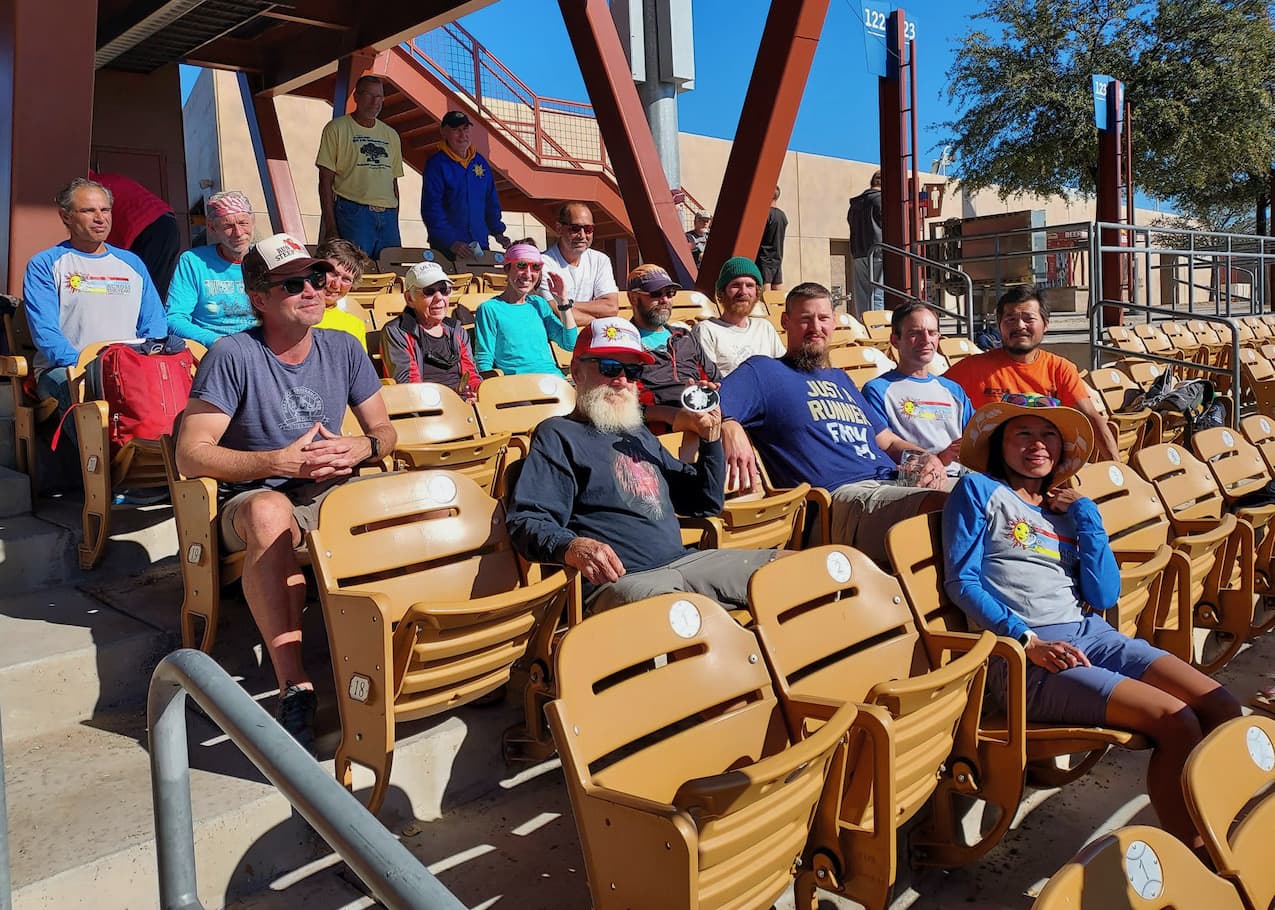
Award Ceremony with many of the 10-day finishers.
And honestly, I found something new to look at and experience on every one of my 401 loops.
No man ever steps in the same river twice.
– Heraclitus
No loop was the same because it is not possible to repeat an exact experience.
Below are just a few things I did when going round in loops.
- Picked a line for each loop. I would hug one side of the path or the other; or stay in the middle, and then every 10cm variation in between.
- On Day 2 Van shared she would run 5 loops and then take a short break. This became my strategy for the rest of the race.
- When you think you’re done, do one more loop. When I planned to sleep for a few hours at night, I would finish a set of 5 loops and tell myself, just one more loop. I treated myself to something tasty from the Food Hall and walked a loop or more, often with Terrie.
- Portaloos are in groups of 3-4 around the course with more on Main Street. When I needed…a moment, I played Portaloo lottery.
- I nodded to the coyotes; high-fived tree branches; and watched out for flying bats and balls every time I passed the sign.
- I created special moments everyday. It was just after 14h on Day 10. The sun was shining. We were the last event with 19 hrs to go. I found a grassy spot on Main Street, took off my shoes, lay down and elevated my feet. It was bliss. In this moment, I knew I had made it.
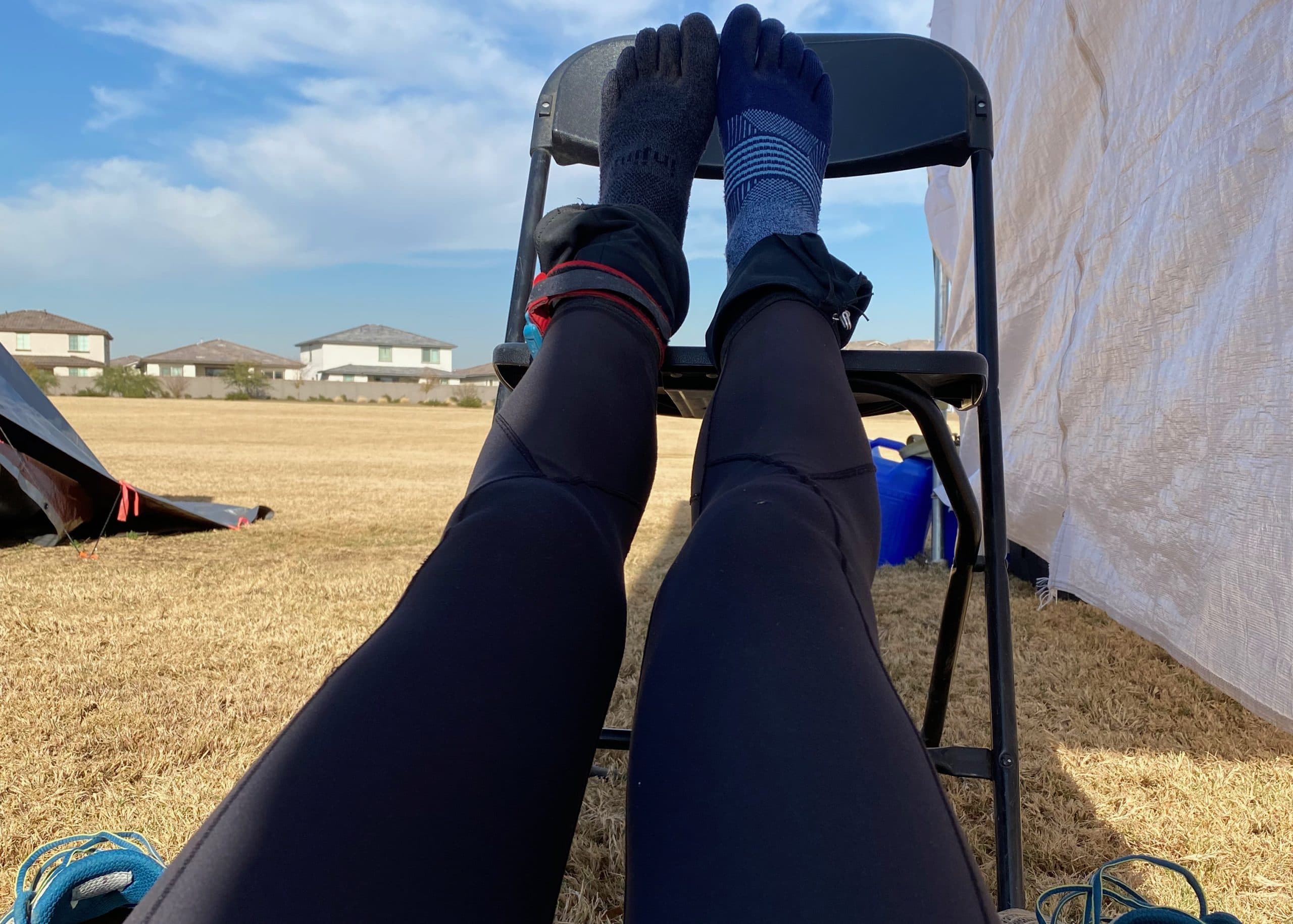
From fellow runners sharing kit, their crew who checked in on me, the messages I received and of course the awesome Aravaipa crew. It was an incredible challenge and truly exceptional way to start a New Year.
A silver washer may have made it home with me.
- Number of loops: 401 – third woman and joint place, crossing the finish line together, with my 420 buddy Steve.
- Distance: 420.15 miles | 676.17 kms
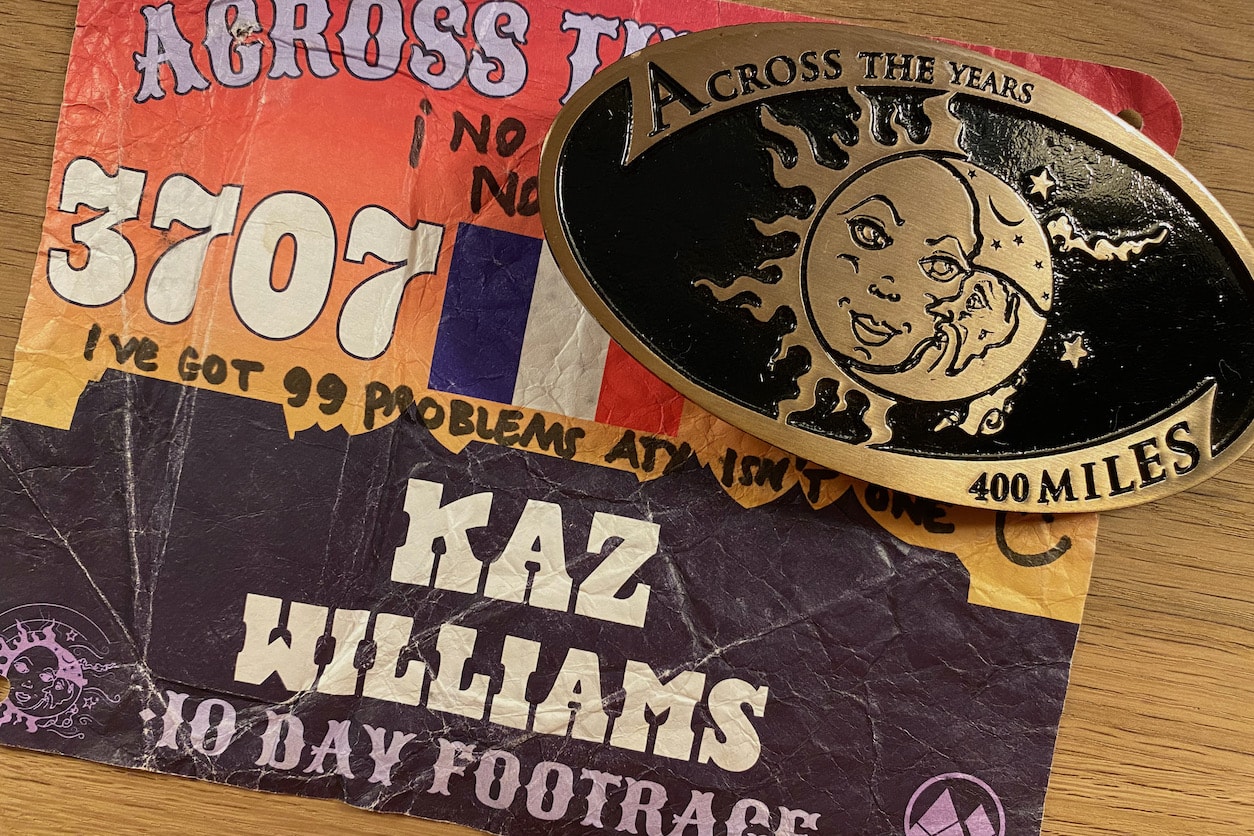
If you have any questions or want to know more about this race from a personal experience, please do not hesitate to message via Facebook or Instagram.


